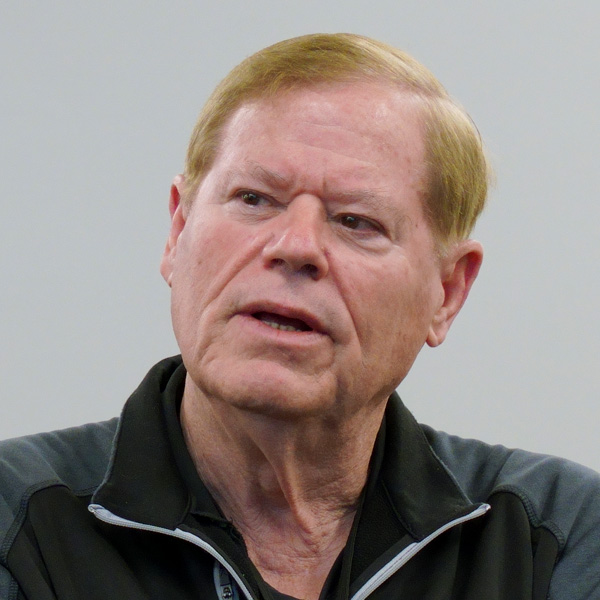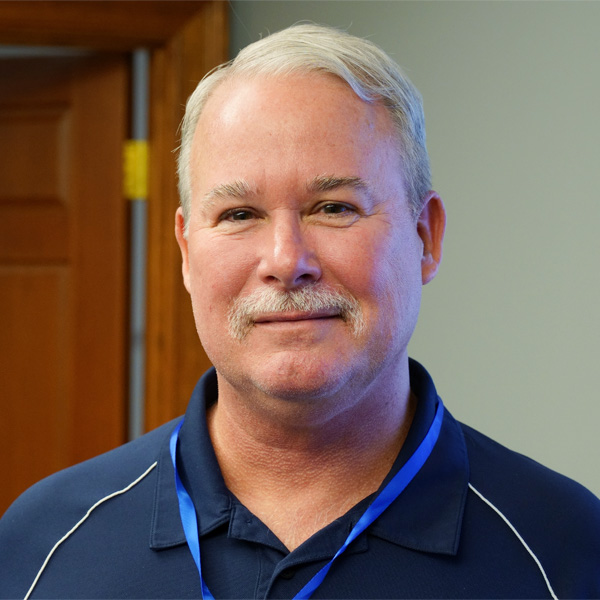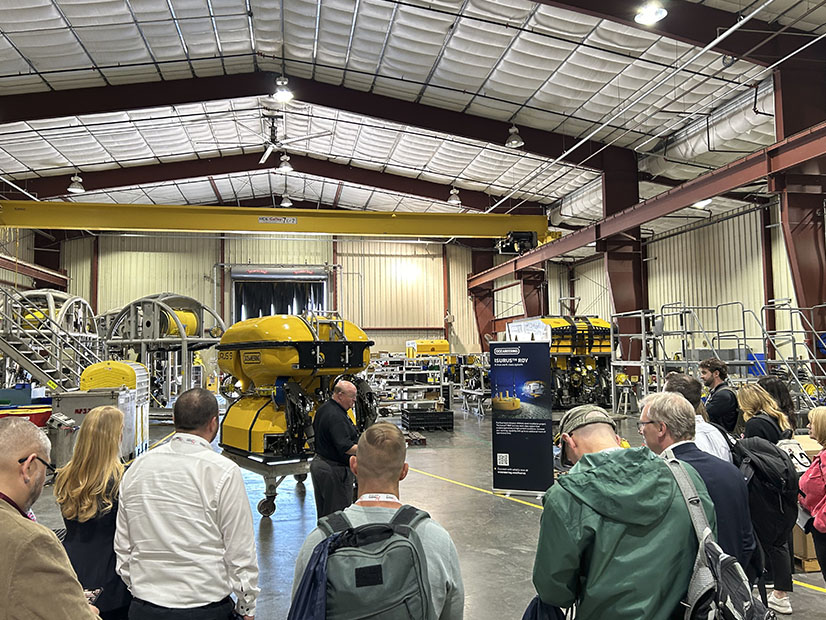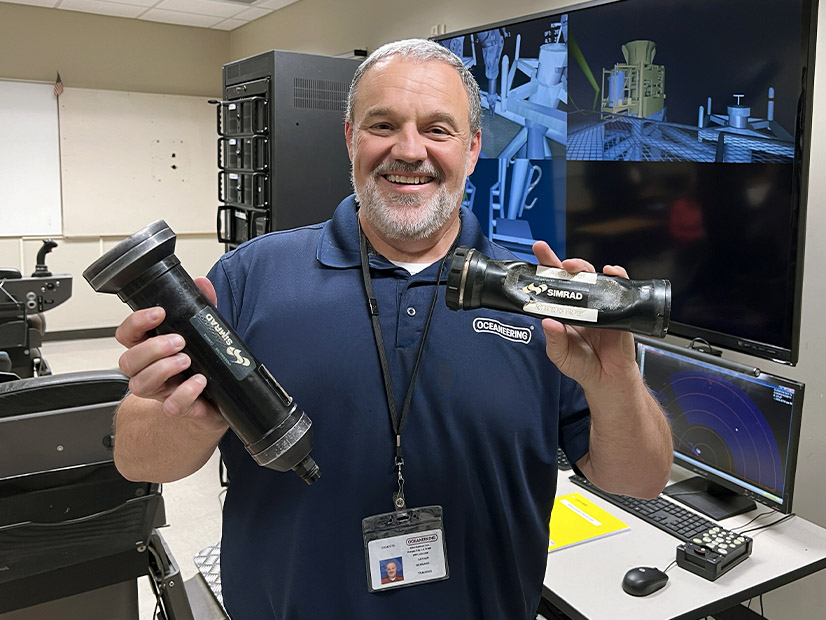DENVER — Utility staff responsible for real-time operations will be equipped to manage the seams between two Western day-ahead markets, but the situation will be far from ideal, state energy officials from across the West heard April 24 at the joint spring conference of the Committee for Regional Electric Power Conference and Western Interconnection Regional Advisory Body (WIRAB).
“I can say that I have a positive outlook that maybe you will be happy to hear: that system operators are going to make it work,” Kelsey Martinez, director of regional markets and transmission strategy at Public Service Company of New Mexico, told the officials during a panel discussion on the potential impact of seams between CAISO’s Extended Day-Ahead Market (EDAM) and SPP’s Markets+.
“Even if we give them subpar designs regarding the seams, even if we give them amateur joint operating agreements [on] Day 1 with the seams, system operators will make it work. They will keep the lights on and there won’t be any large reliability event that we can point to and say that ‘Seams were the smoking gun on that,’” Martinez said on the panel, which was moderated by New Mexico Public Regulation Commissioner Gabriel Aguilera.
“That’s the good news,” according to Martinez, who based her views on five years’ experience as a former system operator and three years managing real-time operations. “The bad news is that seams show up in all kinds of little irritating, inefficient ways in the control room.”
Those irritants include:
-
- use of different sets of “situational awareness” tools and data sets among neighboring balancing authority areas (BAAs), making it difficult for operators to troubleshoot in real time;
- challenges for vendors in configuring those tools because they must translate different market rules among adjacent BAAs; and
- differing time frames among BAAs around when schedules are due and market operating runs take place and are published.
Dividing the West into two day-ahead markets also would roll back some of the gains system operators have seen from improved visibility into neighboring areas provided by widespread participation in CAISO’s Western Energy Imbalance Market (WEIM), Martinez said. The WEIM now includes BAAs representing about 80% of the load in the Western Interconnection.
“Now there’s going to be some visible information and then some invisible information, and that also includes communications,” she said. “So, we’re going to continue to get communications in real time from our market operator, but we may not be getting real-time communications from the other market operators that will affect our system.”
Taken together, those issues add up to what Martinez called a “low-level reliability degradation.”
“These aren’t things that are going to represent huge events on the system, but what they will do is just create economic inefficiencies that are hard to measure but are very prevalent, and could be improved with mature seams operations,” she said.
Perpetuating Inefficiencies
“Having one seam between two markets is a lot better than having 32 seams and no transparent pricing [and] no hourly trading,” said Johannes Pfeifenberger, principal at The Brattle Group, referring to the current patchwork of BAAs that characterizes the Western grid. “But what you get with two markets is you [can] have intertie [trading] between the markets if that feature is enabled, at least; so there’s a lot of work that needs to be done.”
Bilateral trading faces the highest number of “hurdles” under a scenario with multiple BAAs in a non-organized market, Pfeifenberger said, while bilateral trading between two organized markets becomes more efficient due to increased transparency and liquidity.
He said market simulations have shown that an organized day-ahead market in the West would increase trading volumes by 20 to 30% (60 to 90 TWh) compared with the “bilateral” status quo. And while a scenario in which most Western entities participate in one market would bring the highest increase in trading, a two-market scenario still would provide a boost.
But based on evidence gleaned from Eastern RTOs, Pfeifenberger said, seams can “perpetuate” five types of inefficiencies.
A key inefficiency is “largely ineffective” interregional transmission planning, and Pfeifenberger warned that coordinated planning in the West could decline under a two-market scenario compared with the status quo.
“Once you have these markets, that planning between the markets is almost worse than what you have now because these markets are so focused on their region, more so than individual utilities can afford to do,” Pfeifenberger said. “The [West] has a better track record with regional planning than the East.”
The other inefficiencies include:
-
- generator interconnection delays and cost uncertainty created by affected system impact studies;
- a reduced — or overlooked — value of resource adequacy at interties across seams due to restrictions on capacity imports and differences in RA accreditation across two markets;
- difficulties in managing loop flows through market-to-market coordinated flowgates; and
- inefficient trading across contract-path market seams.
Pfeifenberger said the last problem must be addressed by “intertie optimization,” a mechanism that allows for trades across seams to respond to fast-changing real-time prices in adjacent markets.
Fondest Dream
But seams between day-ahead markets will pose problems beyond those experienced at the boundaries dividing the full RTOs in the East, said Scott Miller, executive director of the Western Power Trading Forum (WPTF).
Miller pointed to a recent study WPTF commissioned in partnership with the Portland, Ore.-based Public Generating Pool to examine the potential impacts on trading from a West divided between EDAM and Markets+. The study pointed to increased barriers to contracting across markets, inefficiencies related to greenhouse gas accounting and associated generation dispatch, and differences in market power mitigation approaches, among other issues. It also noted that, given the lack of BAA consolidation seen in RTOs, the two day-ahead markets still will contain “seams within seams.” (See Western Market Seams Issues to Differ from East, Study Finds.)
“We found that, indeed, day-ahead markets are going to be different in many respects, and that the seams areas may present certain challenges that need to be addressed [in ways] that will be not informed by what the RTOs do,” Miller said.
“And this is not to rain on the parade of day-ahead markets; this is definitely going to be an improvement on the status quo,” he said. “But recognize you are talking to somebody whose fondest dream — at least professionally —would be that there is a single market [with] security-constrained economic dispatch across the West. But we are where we are, and we do things incrementally.”
Past and Future Seam?
Rachel Dibble, vice president of power bulk marketing at the Bonneville Power Administration, cautioned against conflating day-ahead seams issues with what would happen in an “eventual RTO.” BPA has been heavily involved in the design of Markets+ and its staff recently recommended the federal power agency select the SPP day-ahead market over CAISO’s EDAM, a move criticized by some proponents of a single Western market. (See BPA Staff Recommends Markets+ over EDAM.)
“I just want to clarify that the seams that exist today between balancing authorities, transmission service providers and transmission operators — [they] will still exist in a day-ahead market,” Dibble said. “Now, there are efficiencies that Kelsey [Martinez] and Scott [Miller] both talked about, even with the day-ahead market that can improve things, but those things don’t go away with a day-ahead market.”
Dibble said she would expect “experienced and responsible” market operators (that is, CAISO and SPP) to work together to “find the efficiencies to be able to allow power to flow across those boundaries in the most efficient way possible and bring participants into that discussion.”
She added that BPA has “a lot of experience” working with CAISO on seams issues, considers the ISO a “valued business partner” and is a WEIM participant.
Dibble noted that BPA negotiated a coordinated transmission agreement with CAISO when PacifiCorp joined the WEIM as the market’s first member in 2014, “long before” BPA joined.
“And that was essentially a seams agreement that identified ways that we could operate efficiently and address that seam and going across,” Dibble said. “So, yes, I agree, it’s a big seam. It’s a seam that’s there today and may be there in the future as well.”
“We can’t really tackle this until we know where the boundary is,” Miller said. “And so, when we get to that point, I think sometime this year, then we can engage meaningfully in what we can do to manage the seams that are unique to the day-ahead market.”
Uncertainty is part of the landscape, according to panel moderator Aguilera.
“Many of you in one way or another are thinking about this in your job, which is whether a utility should join a day-ahead market, and we’re hoping that this session will confuse you further,” Aguilera joked with his fellow commissioners. “We’re not hoping for that, but I believe that our panelists will give you more to think about.”




